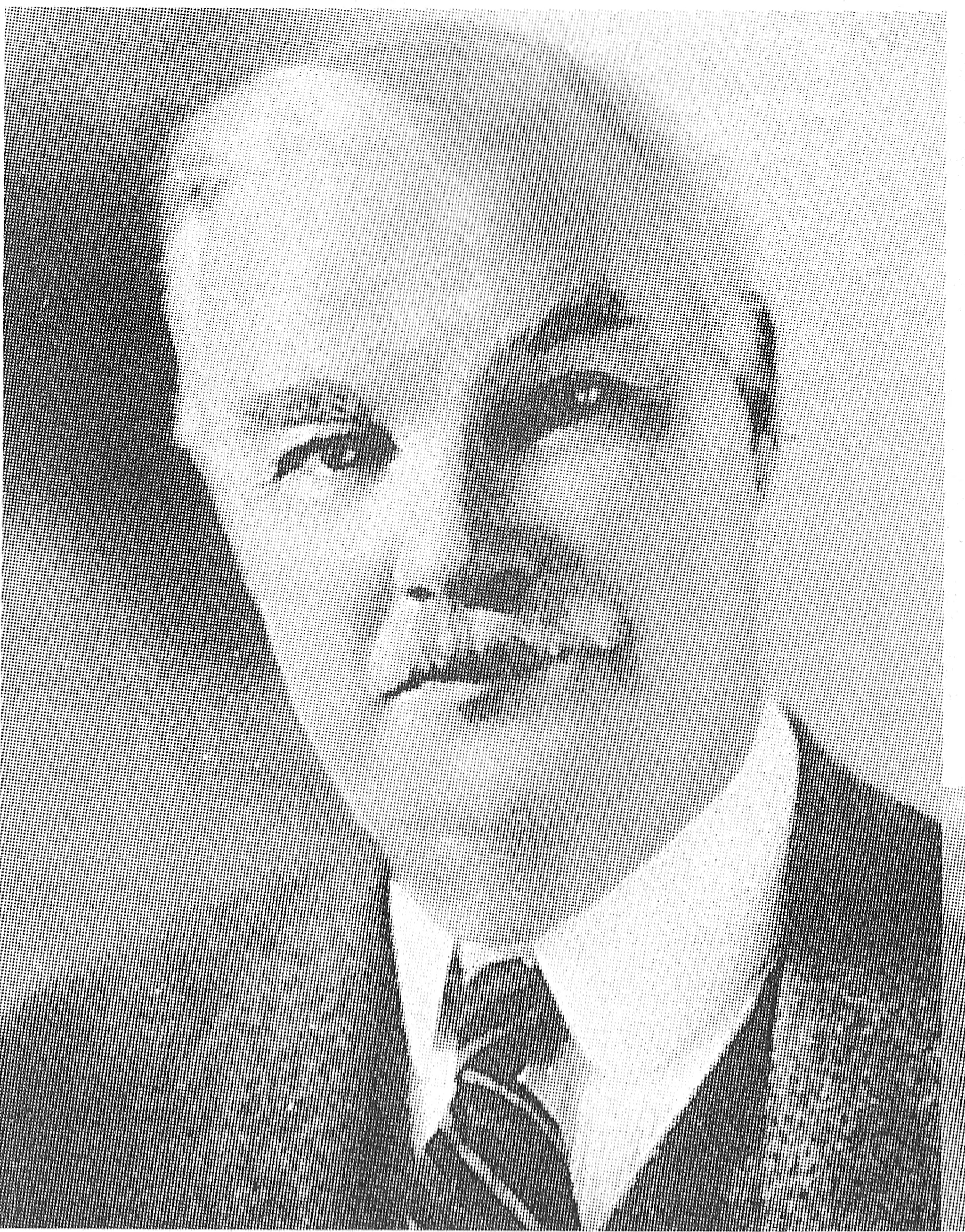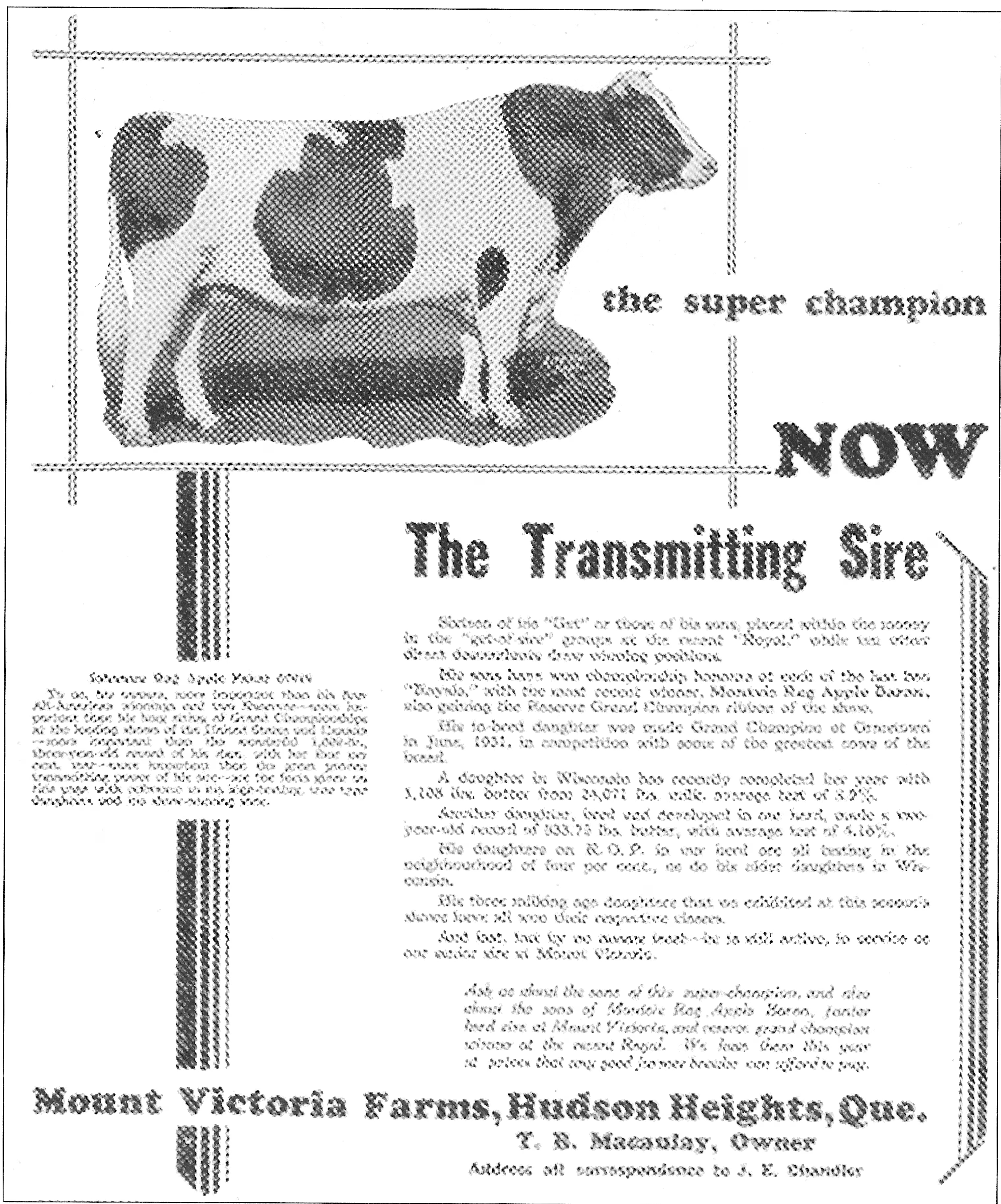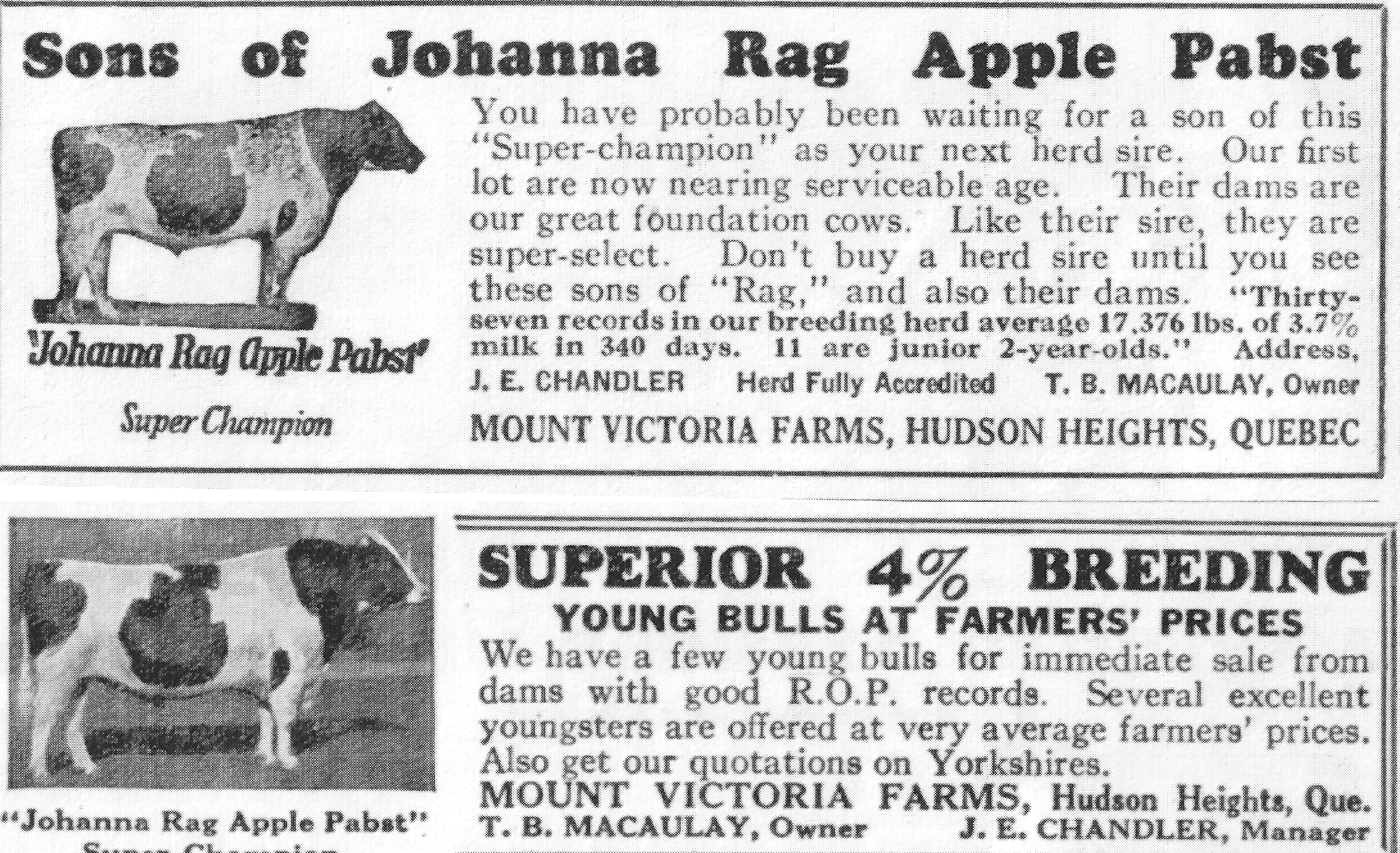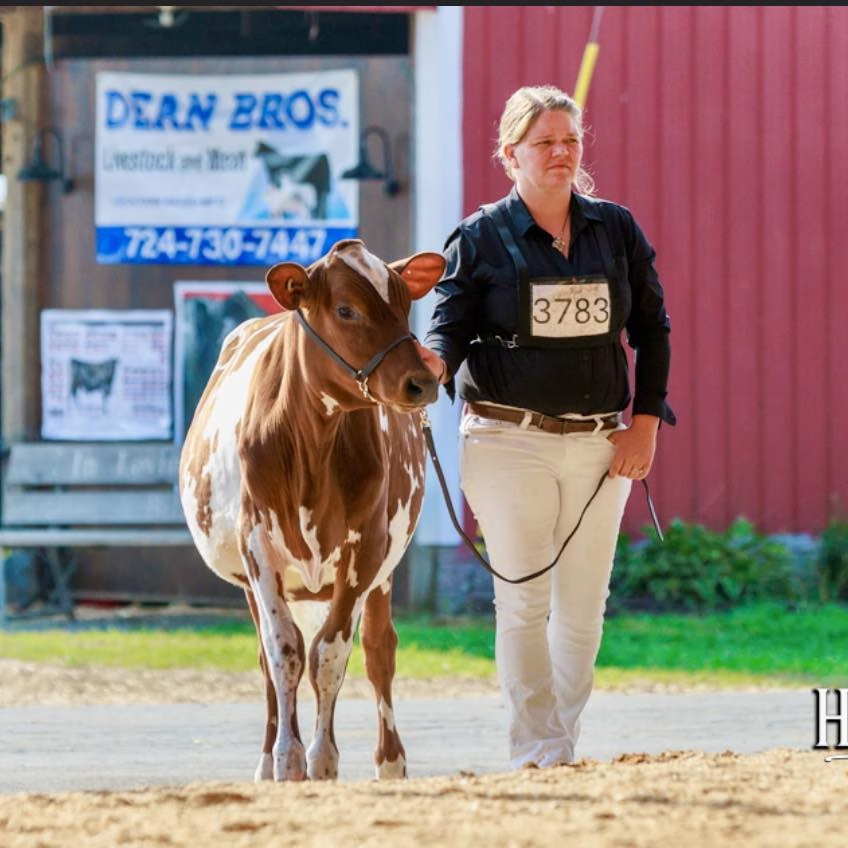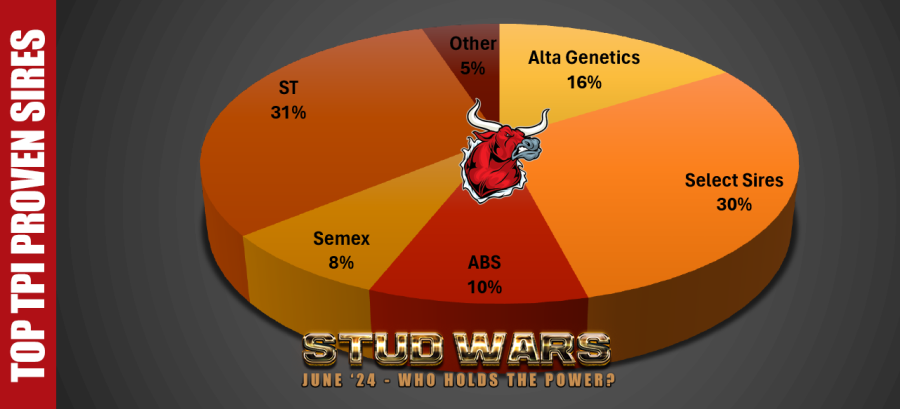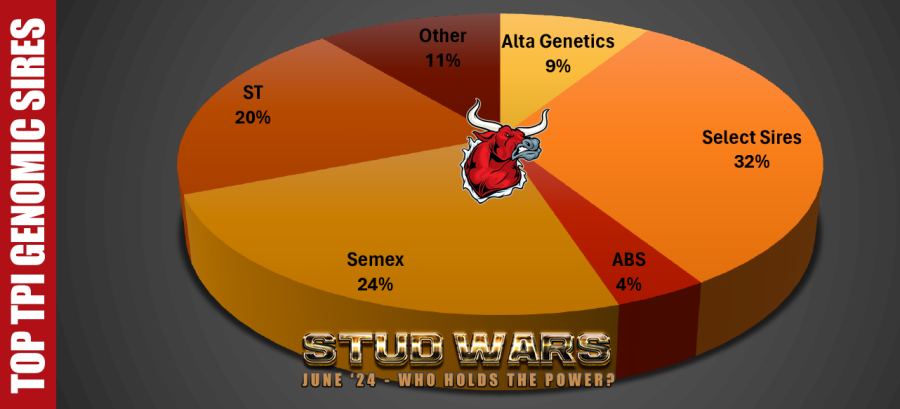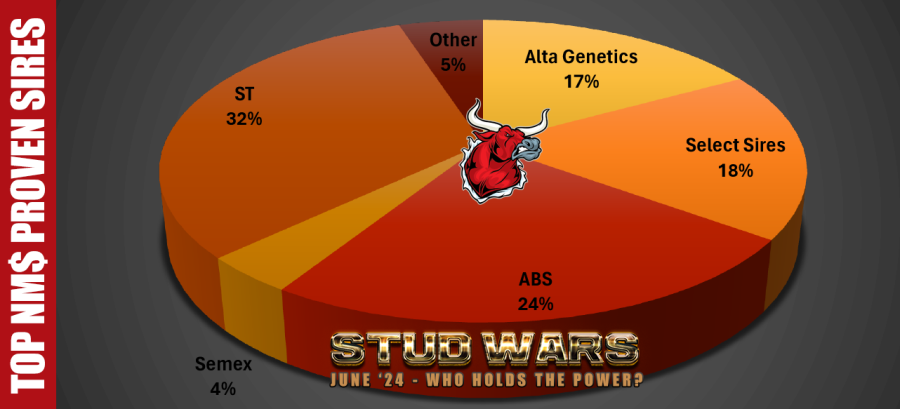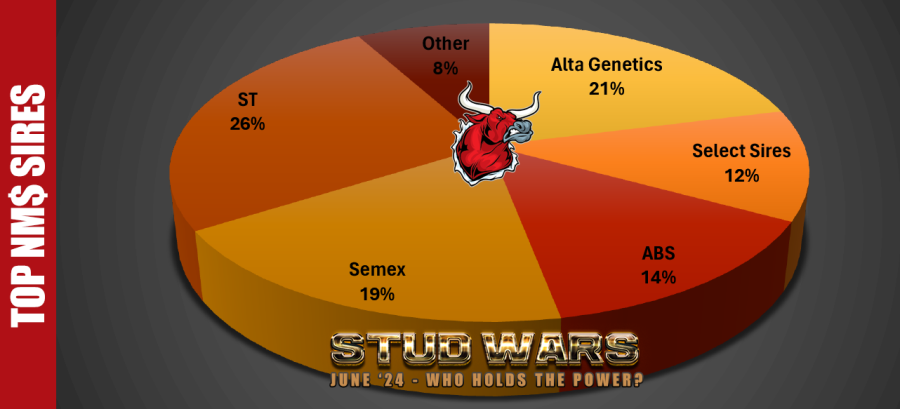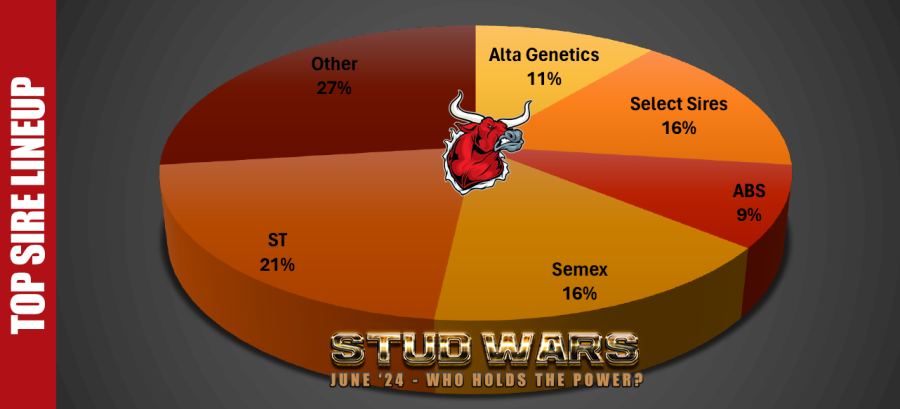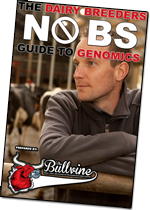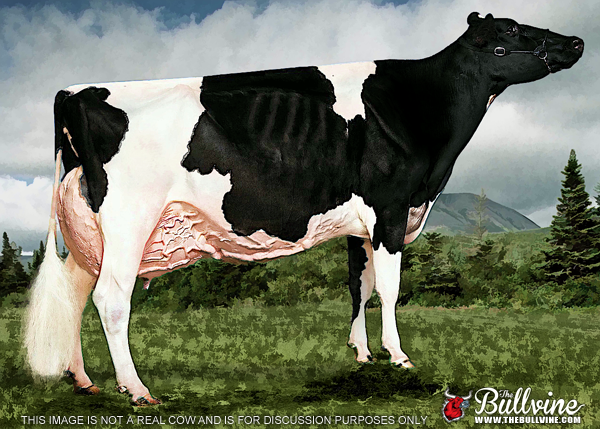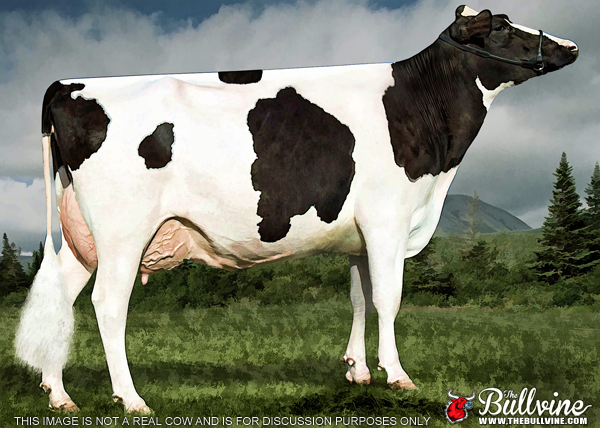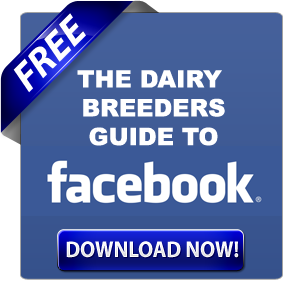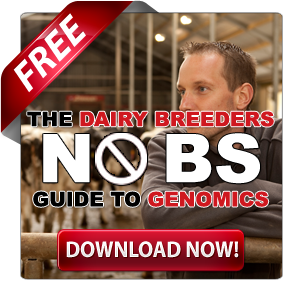How one unassuming cow born in rural Ontario revolutionized Holstein genetics worldwide, bridging show ring glamour with genomic science.
Do you know what amazes me about the dairy world? How a single cow can change everything. That’s exactly what Aitkenbrae Starbuck Ada did. Born in 1986, this remarkable cow didn’t just win ribbons—she created an entire dynasty that’s still shaping Holstein genetics worldwide. I’ve always been fascinated by how one exceptional animal can transform an entire breed’s trajectory. Ada’s story perfectly exemplifies this—bridging old-school showring excellence with today’s cutting-edge genomics.

The Holstein Landscape of the Mid-1980s
The 1980s were a weird time for dairy breeding. Remember that period everyone calls “The Great Divide Between Type and Production”? The industry was at this fascinating crossroads. Since the mid-60s, all this genetic evaluation data had been pouring in, especially for milk output and fat content. Meanwhile, AI organizations were pushing young sire sampling programs.
This created this massive philosophical split. You had your traditional display herds stubbornly focused on type traits—making sure their cows looked gorgeous in the showring. Then you had these forward-thinking farmer-breeders embracing genetic indexes and production metrics. Two completely different approaches to breeding! Honestly, the type-focused herds were gradually losing influence as those production-oriented operations started showing better economic returns.
Ada walked into this changing landscape where the pendulum was swinging away from pure conformation toward a more balanced approach. The industry analysts noted how “leadership in genetic improvement started to shift from breeds and prominent herds to artificial insemination organizations.” Little did anyone know that Ada’s descendants would eventually bridge these competing priorities through their incredible dual excellence in type and production.
The Birth of a Legend
So here’s where it all begins. September 13, 1986—Aitkenbrae Starbuck Ada is born at the Aitkenbrae farm in Holstein, Ontario. Her pedigree? A fascinating combination: sired by the legendary Hanoverhill Starbuck out of Aikenbrae Sheik Arlene (Good Plus-80-2YR-CAN). This genetic cocktail would prove transformative for the Holstein breed.
But Ada’s story starts much earlier. Her lineage traces back to the 1940s with Banostine Dutchland Clothilde, who set a world fat record as a senior two-year-old in 1948 with 623 pounds of fat from 16,272 pounds of 3.8% milk. Tom Hayden, who established the Banella prefix (combining names from his foundation cows Banostine and Ella), bred Banostine to Spring Farm Sovereign Supreme. The resulting heifer, Banella Sovereign Supreme Delight, was disappointingly poor—so much so that Hayden sold her cheaply to his friend Cecil Barber.
Barber, however, saw potential in Delight and bred her to Lifloc Re-Echo Voyageur, producing Sheila Voyageur. When bred to Pabst Walker Ollie, Sheila produced C-Bar Ollie Belle, born May 1, 1959. In the mid-1960s, Walter Aitken, looking to improve his herd, purchased the five-year-old Ollie Belle through cattle dealer Bill Sniveley.
Aitkenbrae Farm wasn’t just any dairy operation. It was run by the partnership of Morley Aitken and Don Lantz, who started working together in 1978. They developed a superior herd under the Aitkenbrae prefix, regularly winning Premier Breeder and Exhibitor banners at Grey County Black & White Day. Their breeding expertise earned them two Master Breeder shields, a prestigious recognition in the Holstein world.
Don Lantz’s connection to the farm began in childhood. When his father died in 1962, Don was just six years old, and his uncle Walter Aitken took him under his wing. Don spent his weekends and summer holidays at Aitkenbrae Farm, developing a deep love for farming and Holstein cattle. This attachment lasted through his youth, and when he came of age, Don went straight to his uncle for his first job. When Walter retired, he was farming in partnership with his son Morley, and recognizing Don’s talent and work ethic, Walter offered to sell his nephew his share of the business.
Despite Ollie Belle’s apparent lack of maternal instinct (her first two calves at Aitkens died at birth), one daughter did survive—Aitkenbrae Radar Olive. Through several generations of strategic breeding, this line eventually produced Aitkenbrae Sheik Arlene, who bred to Hanoverhill Starbuck and gave birth to Aitkenbrae Starbuck Ada on September 13, 1986.
When Ada calved in 1988, Brian Carscadden, first noticed something special about her. At the time, he was working as a fitter and attending school but also wheeling and dealing with cattle. He and Ken Empey were regulars at the Aitkenbrae barn, having bought animals from them before. As Lantz recalled, “When Ada calved in 1988, Brian Carscadden was first to notice her. He was wheeling and dealing in cattle while fitting and attending school. He and Ken Empey were always in and out of Aitkenbrae. Aitkenbrae had sold cattle to both. There was some consultation between Carscadden and Empey about Ada. Empey ended up buying her.
Don Lantz had this practical philosophy about their breeding program: “Morley and I were always willing to let a good one go. We were trying to cash flow with a 50-cow herd and realized that for a cow to get a full opportunity, she would need to get out of here, into the hands of a good promoter.”
The Early Career: From Ontario to the American Show Ring
After Ken Empey purchased Ada, her journey was just beginning. An Ohio investment group, Hygerian Associates, including Robert Binger and William Atkins, was looking to invest in Holsteins. They contacted Empey, who took them to see Ada when she was two months fresh and looking fantastic. They bought the heifer and took her to Ohio, where she completed her impressive two-year-old record: 25,000 pounds of milk with 908 pounds of fat at 3.6% and 798 pounds of protein at 3.2%.
During this lactation, Binger and Atkins and a new partner named Lawson Bennett took Ada to the Michigan State Fair in the summer of 1989. There, she won the senior two-year-old class and was named grand champion. Her next stop was Madison, where, with Howard Binder judging, she 2nd and later moved to third after the milk out behind Dupasquier Stab Winnie and Comestar Laurie Sheik.
At Madison, Ada caught the attention of Douglas King of Kingstead Farms in Damascus, Maryland, and Grey Wilcom of Ijamsville, Maryland. King initially considered Ada “a little on the small side but very correct.” He was impressed enough that he and Wilcom approached Hygerian to buy her, which they did in December 1989.
Under King and Wilcom’s ownership, Ada grew taller and was prepared for the 1990 show season. This would prove to be her breakout year. She won the three-year-old class and was named Supreme Champion at the Eastern National Show. She continued her winning streak by placing first with the best udder in class at Madison. These impressive showings culminated in her being named the Unanimous All-American Senior Three-Year-Old of 1990.
The Shore Connection: Strategic Breeding Decisions
At the close of the 1990 show season, Hardy Shore, Jr., principal of Shoremar, Inc., purchased a half-interest in Ada. Shore had previously worked as a hoof trimmer and was particularly impressed by Ada’s feet and legs. He described her as the best “footed” cow he had ever seen. This appreciation for functional conformation would influence his breeding decisions with Ada.
When the Shoremar herd was dispersed in 1991, Ada sold for $71,000—the sale’s second-highest price—returning to the ownership of Kingstead and Wilcom, who dissolved their partnership with Shore.
During his ownership period, Shore made a critical breeding decision that would shape Holstein history. He flushed Ada to several bulls, including Donnandale Skychief (EX-Extra). Shore admired Skychief but recognized that the bull needed improvement in feet, an area where Ada excelled. This strategic pairing would produce the daughters establishing Ada’s legacy as a brood cow.
Charlie McEvoy, a respected figure in the dairy industry with decades of experience, singles out Ada as “one of my favorite young cows of all time.” He emphasizes her lasting importance, noting, “Her descendants, whether male or female, have changed our barns and show strings forever.” This endorsement from an industry veteran underscores the significance of Ada beyond her accomplishments.
The Skychief Sisters: Building the Ada Empire
The flush to Donnandale Skychief produced two daughters who would become legends in their own right: Shoremar S Alicia and MS Kingstead Chief Adeen.

All-American Alicia: Extending Excellence
Shoremar S Alicia, born in 1995, elevated the family’s status to unprecedented heights. Classified Excellent-97, Alicia joined an elite group of only 35 registered Holsteins in North America to achieve this near-perfect score. Her show career eclipsed even her dam’s impressive record, as she was nominated All-American five times in milking form and crowned Supreme Champion of the Royal Winter Fair in 2000.
The story of how Alicia came to be involves another key figure in Holstein breeding. David Innes of the City-View herd at Woodstock, Ontario, met Hardy Shore at a show and inquired about buying embryos. Ada had just produced a great flush to Skychief, so a deal was made for two embryos. The two resulting calves were jointly owned by Shore and Innes, one of them being Shoremar Alicia, who would become a World Champion.
Under the ownership of Jeff Butler, Howard Binder, and Kingstead, Alicia topped the five-year-old class at Madison and won the grand championship at the Royal Winter Fair in 2000. These accomplishments made her the unanimous choice for All-American and All-Canadian 5-year-old that year. After winning the 125,000-lb. cow class and the grand championship at the Eastern National Show in 2003, she was voted All-American aged cow. She continued her show ring success with a Reserve All-American nomination in 2004 and High Honorable Mention in 2005.
Beyond her show ring dominance, Alicia firmly established herself as a brood cow in her own right. With more than a dozen Excellent daughters from various sires, she continued Ada’s pattern of reliably transmitting elite type. Her influence branched primarily through her Startmore Rudolph daughter, Cityview R Alicia (Excellent-92-CAN 23*), and her Durham daughters BKB Abby (Excellent-95 3E DOM) and BKB Amanda (Excellent-92 GMD DOM).

All-American Adeen: Expanding the Influence
The second Skychief daughter, MS Kingstead Chief Adeen, born in 1997, proved equally influential but through different channels. Described as a “foundation cow for several herds,” Adeen established connections to names that would become Holstein royalty: Atwood, Atlee, Ariel, and Autumn.
Adeen’s story takes an interesting turn. In 1997, Kingstead sold their herd to three Maryland breeders. By the flip of a coin, one of the buyers, Cranberry Meadows Farm, owned by Gary and Crystal Dell of Westminster, acquired the two-week-old Chief Adeen. When the time came, she was flushed to Maughlin Storm, resulting in five heifers that all classified Very Good as two-year-olds. One of these was MD-Delight Storm Amberlee-ET, who would play a crucial role in extending the family’s influence.
Adeen was later sold as a two-year-old to a syndicate of Billy and Mike Heath, Gerald Todd, and Amlaird Callum McKinven. During the six months she was in their ownership, she was flushed successfully to Comestar Lee. The star of this flush was Amlaird Lee Alice, the first Junior 2-year-old at the World Dairy Expo in 2003 and named All-American.
In 2000, the Shoremar S Alicia and MS Kingstead Chief Adeen duo reached their pinnacle in the show ring. They were the unanimous choice for All-American Produce of Dam. Chief Adeen was nominated All-American as a junior 3-year-old in 2000 for Jeff Butler and Lance and Amy Ruppert, producing over 30,000 pounds of 4% milk that year.
Adeen then sold to Jeff Butler, Lance, and Amy Ruppert. At the World Dairy Expo 2000, Adeen stood 6th in the Junior-3 class and paired with her older sister Alicia to win the Produce of Dam class. Shortly afterward, Kingstead bought out Ruppert’s share, and from that time onwards, all progeny were registered with the BVK prefix for Butlerview and Kingstead.
Jeff Butler of Butlerview Farms, who owned Chief Adeen from 1999 until she passed away in 2011 at age 14, described her as “one of the most influential and one of the only cows in the breed with offspring over +2500 on genomics and All-American progeny.” This dual achievement—excelling in traditional show type and modern genomic metrics—foreshadowed the family’s future significance, bridging these two worlds.
Adeen’s reproductive career was remarkable by any standard. She left behind 51 Excellent daughters classified worldwide, ranking her second only to Ashlyn for the most Excellent daughters of all time. This prolific production of high-quality offspring established her as an “industry elite” and exponentially expanded the Ada family’s influence.
Douglas King reflected on working with these remarkable cows: “It was the thrill of a lifetime to work with those two great cows, Adeen and Alicia. I’ve often thought how special it would be to assemble all the daughters of Adeen and Alicia in one barn. What a sensational barn full of cows you would have!”
From Show Ring to Genomic Revolution

The Durham-Atlee Connection: A Critical Genetic Branch
While many breeding decisions contributed to the Ada family’s expansion, perhaps none proved more consequential than those involving Adeen’s granddaughter, Durham Atlee. On September 11, 2001, MD-Delight Storm Amberlee gave birth to MD-Delight Durham Atlee-ET, sired by Regancrest Elton Durham. Michael Heath of Heath Holsteins, Rick, Shannon Allyn, and Jason Lloyd purchased Atlee as a bred heifer from the Dells.
Heath’s decision to buy Atlee came with some hesitation. He was working his last sale as a professional fitter, the Maryland Convention Sale, when he first noticed Atlee. “Where we had the fitting chute set up, Atlee was tied just six feet away. I kept looking at the calf, liking the calf, looking at the calf, liking the calf, but she was small for her age,” Heath shared. About a year later, Heath traveled to North Carolina to Foster’s, who had bought Atlee at the Maryland Convention Sale. Priced at $20,000 as a springing heifer, Heath took a chance on her. He liked her pedigree and thought she could make money selling embryos if she classified at least Very Good-85 as a two-year-old.
Heath’s gamble paid off spectacularly. Atlee was trucked from North Carolina to Massachusetts for their state show on one of the hottest summer days, but she pulled it together and won her class the following day. She later placed 15th in the senior two-year-old class at the World Dairy Expo.
As a senior three-year-old, Atlee was supposed to be due September 1, but they had the wrong breeding date. She ended up calving mid-September, and the partners weren’t sure if she would be ready for the show. Heath convinced them to send her anyway, figuring they had nothing to lose. Less than a week later, MD-Delight Durham Atlee was named Reserve Intermediate Champion of the 2005 International Holstein Show.
Heath reflected, “She is worldwide known by name, and I don’t know how big of name she would have been if she hadn’t gone to Madison.” This observation highlights the continued importance of show ring exposure in building a cow family’s reputation, even as the industry moved toward more data-driven breeding decisions.

The Golden Flush: Birth of a Genomic Giant
The truly transformative moment for the Ada family’s international impact came through what has become known as the “golden flush”—the breeding of Durham Atlee to Braedale Goldwyn. In 2007, this mating produced several sons who would become influential sires: Maple-Downs-I GW Atwood, Allyndale-I Attic, Allyndale-I Atticus, Maple-Downs-I GW Atlantic, Allyndale-I GW Arden, and Mr. Atlees Altaamazing.
These bulls were distributed among major AI organizations: Atwood, Arden, and Atlantic went to Select Sires, Attic, and Atticus to Semex, and Altaamazing to AltaGenetics Inc. In the same year, MS Atlees SHT Aftershock, Atlee’s Shottle son, was purchased by St. Jacobs A.B.C.

Steve Velthuis of Velthuis Farms purchased embryos from this flush, resulting in three heifers and five bulls. In a twist of fate that demonstrates the sometimes unpredictable nature of breeding, Velthuis shared that Atwood was initially “the one left that no one wanted” when other AI organizations made their selections. “He was right at the time of genomics, and the other brothers were high enough that they didn’t need to test Atwood. We collected him before we got his genomics,” shared Velthuis.
Through a conversation between Velthuis and Ed Fellers, a syndicate was formed for Atwood that enabled his sampling program. The results would exceed all expectations, as Atwood emerged as the leader with soaring demand. As Velthuis noted, “Most people can’t get Goldwyn semen, so Atwood is a good replacement for those that want Goldwyn blood.”

By the end of 2013, Atlee’s six proven sons had all earned Superior Type credentials; five were in the top 10 for type. This remarkable achievement prompted Tim Abbott to claim that “Atlee’s ability to transmit type appears to be as strong as any cow in breed history.” This assessment was validated in the fall of 2015 when Charwill Attic Marcy (EX-95-USA), a daughter of Allyndale-I Attic owned by MilkSource, Kaukauna, Wisconsin, ended an undefeated show season by winning the grand championships at both the Royal Winter Fair and International Holstein Show.
The same flush also produced MS Atlees Goldwyn Ariel-ET (VG-89), Reserve All-American junior 2-year-old 2009. She was later purchased for $1.5 million by a Canadian syndicate, further cementing the family’s economic impact on the breed.

The Ada Legacy in Modern Holstein Breeding
Bridging Breeding Philosophies
The evolution of the Ada family parallels the broader transformation of dairy cattle breeding over the past four decades. From the mid-1960s through 1980, the industry experienced what has been described as “The Great Divide Between Type and Production,” where traditional display herds focused exclusively on conformation while progressive farmer-breeders embraced genetic indexes for production traits.
Their ability to excel across this divide makes the Ada family remarkable. This family has maintained relevance through every phase of the industry’s development, beginning with Ada’s show ring success, continuing through Alicia and Adeen’s exceptional type transmission, and culminating with Atwood’s emergence as a genomic giant.
In today’s breeding landscape, “DNA indexes have become the starting point in animal selection decisions for breeders regardless of their trait priority: type, production, fertility, health, or functionality.” The Ada family’s success in adapting to this paradigm shift demonstrates the rare ability to combine traditional type excellence with modern genetic merit.

Global Impact Through Multiple Generations
The influence of the Ada family extends far beyond North America. Their descendants have succeeded in show rings and breeding programs worldwide, demonstrating the family’s genetic prepotency across diverse environments and management systems.
In Japan, for example, TMR Adeen Dundee Chief-ET, a Dundee daughter of Chief Adeen, was named first place senior three-year-old and grand champion at the Hokkaido Black and White Show, described as “the biggest spring show in Japan.”

Lessons for Modern Breeders
If there’s one thing the Ada family teaches us, it’s the value of strategic mating decisions. From Ada’s original mating to Donnandale Skychief that produced Alicia and Adeen to the “golden flush” of Durham Atlee to Braedale Goldwyn that produced Atwood, key breeding decisions amplified the family’s influence exponentially.
In today’s era of genomic selection, where 70% of dairy breed pregnancies come from high-index genomic bulls, the principles demonstrated by the Ada family remain relevant. The most successful breeding programs still balance genetic data with visual assessment and family history.
The Ada family shows us how to balance tradition and innovation. While modern dairy breeding has embraced genomic selection and advanced reproductive technologies, the fundamental principles of identifying and propagating superior genetics haven’t changed.
Want to see the impact of this approach? Just look at the production statistics. Holstein cows in 1920 produced about 2000 kg of milk annually. Today’s Holsteins average over 10,000 kg annually with the same solids content. That’s not just progress—that’s transformation.
The commercial success of the Ada family demonstrates the economic potential of elite genetics. The “Impact of Ada Sale” averaged an estimated $6,200 on 103 head, all from a single bloodline. This premium has only increased in the genomic era, exemplified by the $1.5 million price tag for MS Atlees Goldwyn Ariel.

The Future of Holstein Breeding: Building on Ada’s Legacy
The Holstein breed continues to evolve, with genomic selection accelerating improvement. The Ada family’s ability to maintain relevance through these technological shifts provides a blueprint for breeders seeking sustained success.
As the dairy industry evolves, the challenge for breeders will be maintaining Holstein’s distinctive characteristics while advancing performance across multiple traits. The Ada family shows how the elite type can coexist with production efficiency and genetic merit.
Remember, the modern Holstein results from centuries of selective breeding, dating back to the crossing of black “Batavians” with white “Friesians” 2000 years ago in The Netherlands. The breed has continuously adapted to changing agricultural needs throughout this long history while maintaining its core identity.
Conclusion: The Enduring Significance of Aitkenbrae Starbuck Ada
Isn’t it amazing how one cow born in Ontario in 1986 could reshape an entire breed globally? Through her daughters Alicia and Adeen, her granddaughter Atlee, and descendants like Atwood, the Ada family has maintained relevance across multiple eras of dairy breeding—from the show-focused 1980s through the production-driven 1990s and into today’s genomic age.
As Charlie McEvoy perfectly put it, her descendants “have changed our barns and show strings forever.” This transformation extends beyond the show ring to commercial dairy operations worldwide.
For modern breeders navigating an increasingly complex landscape, the Ada family offers an inspiring example—a reminder that behind all the genomic data and reproductive technologies, the art of identifying and propagating exceptional individuals remains at the heart of successful dairy breeding.
The final chapter of Aitkenbrae Starbuck Ada’s story is still being written. But one thing’s for sure—her influence will continue to shape the Holstein breed for generations.
Key Takeaways
- Ada’s story exemplifies how a single exceptional individual can transform an entire breed through thoughtful breeding decisions and genetic prepotency
- The Ada family’s rare ability to excel in both show ring type and modern genomic metrics provides a blueprint for breeders seeking to balance tradition with innovation
- Strategic matings—particularly Ada to Skychief and later Atlee to Goldwyn—demonstrate how complementary genetic pairings can exponentially amplify desirable traits
- The economic value of elite genetics is highlighted by the commercial success of Ada’s descendants, including the $1.5 million sale of MS Atlees Goldwyn Ariel
- The continued relevance of the Ada family across multiple eras of dairy breeding underscores how fundamental breed quality maintains value even as selection technology evolves
Executive Summary
Born in 1986 at Aitkenbrae farm in Ontario, Aitkenbrae Starbuck Ada transformed from promising show cow to Holstein dynasty matriarch through strategic breeding decisions that amplified her genetic influence across generations. After being crowned Unanimous All-American Senior Three-Year-Old in 1990, Ada’s true legacy emerged through her two exceptional Donnandale Skychief daughters—Shoremar S Alicia and MS Kingstead Chief Adeen—who produced dozens of excellent offspring and established Ada’s family as genetic royalty. This lineage reached its pinnacle with the “golden flush” breeding of Ada’s granddaughter Durham Atlee to Braedale Goldwyn, producing the globally influential bull Atwood and other superior sires. Ada’s family uniquely bridged the historical divide between show ring conformation and production traits, creating a genetic pathway that continues influencing modern Holstein breeding across all continents.
 Join the Revolution!
Join the Revolution!
Join over 30,000 successful dairy professionals who rely on Bullvine Daily for their competitive edge. Delivered directly to your inbox each week, our exclusive industry insights help you make smarter decisions while saving precious hours every week. Never miss critical updates on milk production trends, breakthrough technologies, and profit-boosting strategies that top producers are already implementing. Subscribe now to transform your dairy operation’s efficiency and profitability—your future success is just one click away.







 Join the Revolution!
Join the Revolution!

